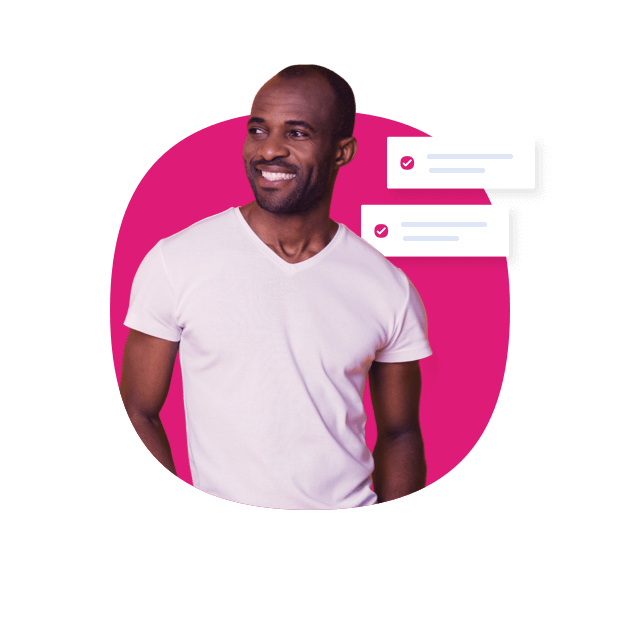Audience segmentation helps you bring order to the chaos of modern consumerism.
With a clear understanding of your audiences and how they spend their time, you can provide the best customer experience, influence the path to purchase, and identify the best groups to target.
And with marketing departments under more pressure than ever to tighten budgets and rethink their spend, it’s crucial to make sure you’re listening to what the data tells you. That’s where GWI’s market research platform comes into play.
What is audience segmentation?
Audience segmentation is the process of grouping people based on shared characteristics. These groups, or audience segments, can be used to create more targeted campaigns, and tailored messaging that resonate with your target audiences.
Why is audience segmentation important?
Audience segmentation helps you elevate your overall marketing strategy, taking it from average to exceptional. Let’s take a closer look at the key benefits of audience segmentation, and why it’s important.
1. It improves your focus
Adopting one approach for everyone rarely hits the mark. Audience segmentation allows you zero in on your target audience, dive into what they care about, and understand what they want from you, so you can make sure your marketing lands.
2. It ensures your strategy is customer-first
The best way to resonate with your customers? Stop guessing what you think will work with them, and use segmented audience data to guide the way. Unlock insights on what makes your audience unique, and use them to take your next campaign to new heights.
3. It uncovers new opportunities
Audience segmentation helps you understand the nuances between segments and spot interesting quirks that can inform new content and partnership opportunities.
Let’s say you’re a soft drinks brand looking for new sponsorship opportunities after your last campaign fell flat. Through audience segmentation, you come across a previously-undiscovered insight that one of your target segments stands out for following handball, and they’re more likely than average to listen to podcasts. This informs your ad placement and opens up a new pool of partners to engage with, allowing you to appeal to this audience in a new and exciting way.
4. It gives you a competitive advantage
Knowledge is power; the more you know, the more you can do with it. Keeping tabs on your audience, and what’s happening in their worlds can help you spot trends, and act on them fast, leaving your competitors playing catch up.
5. It helps you to retain and attract the right customers.
If you know what your audience likes, and where they spend their time online, you’ve got a much better chance of creating content and products they love.
Audience segmentation types
So, how do you get started? The first thing to do is to choose what you want your audience analysis to focus on. There are many different ways you can segment your audience, some of the most commonly used segmentation types include:
- Demographic segmentation: This describes the outward-facing attributes of a person such as age, gender or marital status. It’s a great method if you’re looking for a top-level view, but combining this type of segmentation with others will allow you to get a lot more granular.
- Behavioral segmentation: This tells you the actions people take. This could be their online shopping preferences, social media usage, gaming habits or what devices they use.
- Psychographic or attitudinal segmentation: These give you clues into your audience’s wider perceptions, interests and mindsets. For example, why they like or dislike certain brands, why they enjoy certain movie genres, their lifestyle choices or values.
- Geographic segmentation: This explains where your target market is located. This can be as expansive or narrow as you like, from continent to zip code.
With GWI, you can combine as many different segmentation types as you like to build granular audiences for more targeted campaigns. With over 200k+ profiling points to work from, you’re spoilt for choice.
Audience segmentation tips
Now you’ve decided what you want to zero in on, here are some tips to help you get the most out of audience segmentation.
1. Use detailed audience personas to guide your creativity
Start with your audience’s core set of demographics, such as age, location, ethnicity, or family size.
These indicators are a good foundation, but you need to build on this data with insights into behaviors, preferences and affinities.
This is a great way to create more detailed audience profiles and data-driven target personas, reducing the chance of serving irrelevant content.
Combining these target personas with an understanding of the channels and platforms best suited to reach a particular group will help you drive more targeted campaigns, and higher engagement.
2. Get to know their needs with customer journey maps
When choosing between different products and services, consumers select the ones that best meet their needs.
Understanding and responding to these needs is key if a campaign is to deliver the desired results.
Most audience segmentation tools focus on behavioral analytics, but going beyond historical data and expanding helps you anticipate the next step your consumer might take.
Armed with this understanding of what drives them, you can map out detailed customer journeys using data and insights to tell you how and where to deliver your message for greatest impact – channels, social media platforms and format.
By crafting specific content for each point along the journey, you’ll significantly increase your chances of guiding the customer along to the next stage.
3. Combine your data to create a more personalized experience
The in-depth data now available means audience segmentation can be refined to achieve far greater levels of personalization.
Segmenting audiences to deliver tailored messaging and experiences for every customer at every stage is now an essential requirement.
Combining qualitative personas with quantitative data to back them up, you can create marketing campaigns that you know will hit the mark with the right people.
4. Investigate usage and needs for more differentiation
Usage and needs-based audience segmentation helps you get to the heart of what your audiences want, and how to differentiate your offer.
If you have multiple products or services as part of your offering, drilling down into the different ways your audience might use them can be a great way to segment them.
Imagine you’re a car manufacturer with a range of models on offer. You need to understand the different reasons consumers have for owning a car, how often they use it, and what matters to them most when buying a new vehicle when deciding which audience to target for each model.
You may have one audience segment of Gen X professionals that use their car primarily for commuting, and another segment of millennial parents who need a larger, mid range car for taking their children back and forth to school.
Each segment will have its own set of needs and challenges that you need to understand, and align your marketing efforts to.
This approach also helps to identify new audiences who share similar needs, so you can find a message that will resonate for a wide range of consumers.
5. Find out what really engages your audience for more reach
To increase your reach, you need to know what engages your audience segments, but also how their behaviors differ across channels.
When it comes to different audiences, finding out what works for them is key. Key insights on media habits, such as Gen Z vacationers are 44% more likely than everyone else to say they’re influenced by social media posts, can help you ensure you’re targeting your audience in the right places.
Using these insights to deliver more engaging campaigns will bring your reach to new heights.
What’s more, tracking targeted content will allow you to see when and how different audiences are activated – an insight that can be built into further segmentation and incorporated into future campaigns.
Audience segmentation in action
One of the best examples of audience segmentation driving a high-impact marketing strategy is VERB Brands. This luxury agency used audience segmentation to boost high quality heads by 36%. Here’s how they did it:
The challenge
After a series of successful industry events, and with COVID putting a halt on face-to-face networking and events, one of the biggest challenges for VERB from a new business and marketing point of view was continuing to share valuable and unique insight for the luxury sector.
“With the pandemic, we were unable to launch marketing events and to meet other leaders in the industry who would look to the agency for help.
We had to pivot how we drove value for our own brands, and prospective brands we were speaking to.”
The affluent consumer group is notoriously tricky to reach. They value privacy, and finding specific data about this group is challenging. VERB looked to third-party data platforms to ensure they were reaching them right.
The action
To achieve their goals, VERB partnered with GWI to commission a custom research study, surveying 1,000+ affluent consumers across genders and age groups in the UK and the U.S.
“We wanted to understand the differences in how followers and non-followers are finding or buying luxury brands, essentially, along with their general attitudes toward luxury brands.”
The custom report led to the production of VERB’s’s State of Luxe report, which segments affluent consumers into three tribes:
- The digitally disconnected
- The traditional luxury consumers
- The luxury advocate
It then tracks these subsets across behaviors and attitudes to signpost crucial touchpoints and opportunities. Throughout, the team was able to highlight the answers so many luxury brands were asking for:
- What types of affluent consumers exist right now?
- What do they expect from luxury brands
- How do they prefer to research and buy luxury brands?
The result
The final report was published on the VERB website as a free download – and resulted in:
- 36% boost in inbound leads
- 221% growth in inbound leads versus the previous year
- 53% increase in website traffic
- 27% email list growth
The research proved a success, positioning VERB Brands as the go-to agency to reach affluent and high net-worth consumers.
Your targeting is only as good as your segmentation
Audience segmentation is at the heart of good marketing. If not carried out with enough detail, companies run the risk of becoming too broad in their targeting, and turning potential customers away.
Taking the time to segment your audience with the most up-to-date, in-depth data pays off in the long term. Trust us, your profit margins and your customers will thank you for it.
Fancy a look around?
Book your demo





.webp?width=495&height=317&name=pink_thumb_graphs%20(1).webp)
.webp?width=495&height=317&name=pink_thumb_letter%20(2).webp)